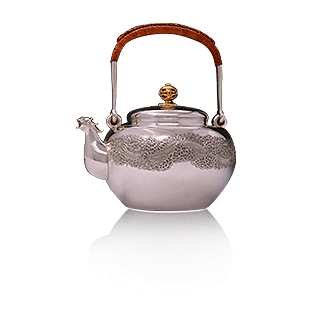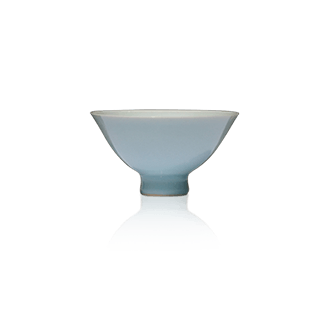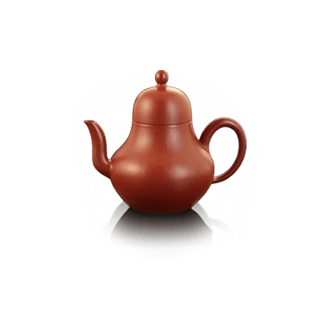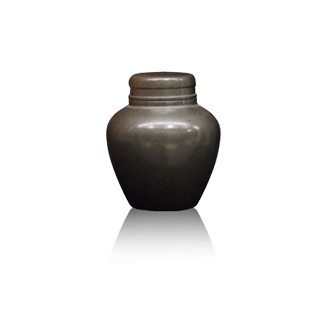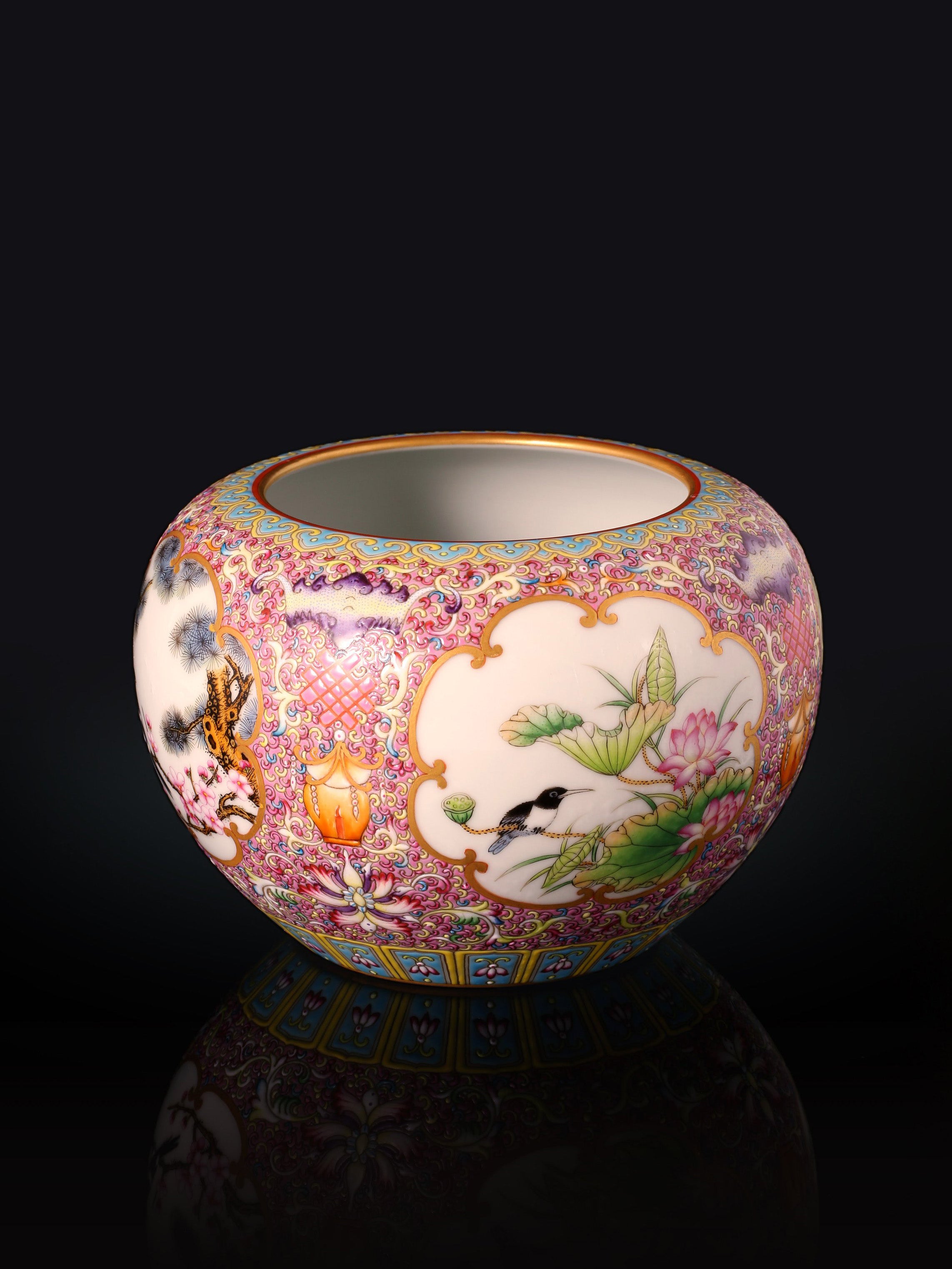

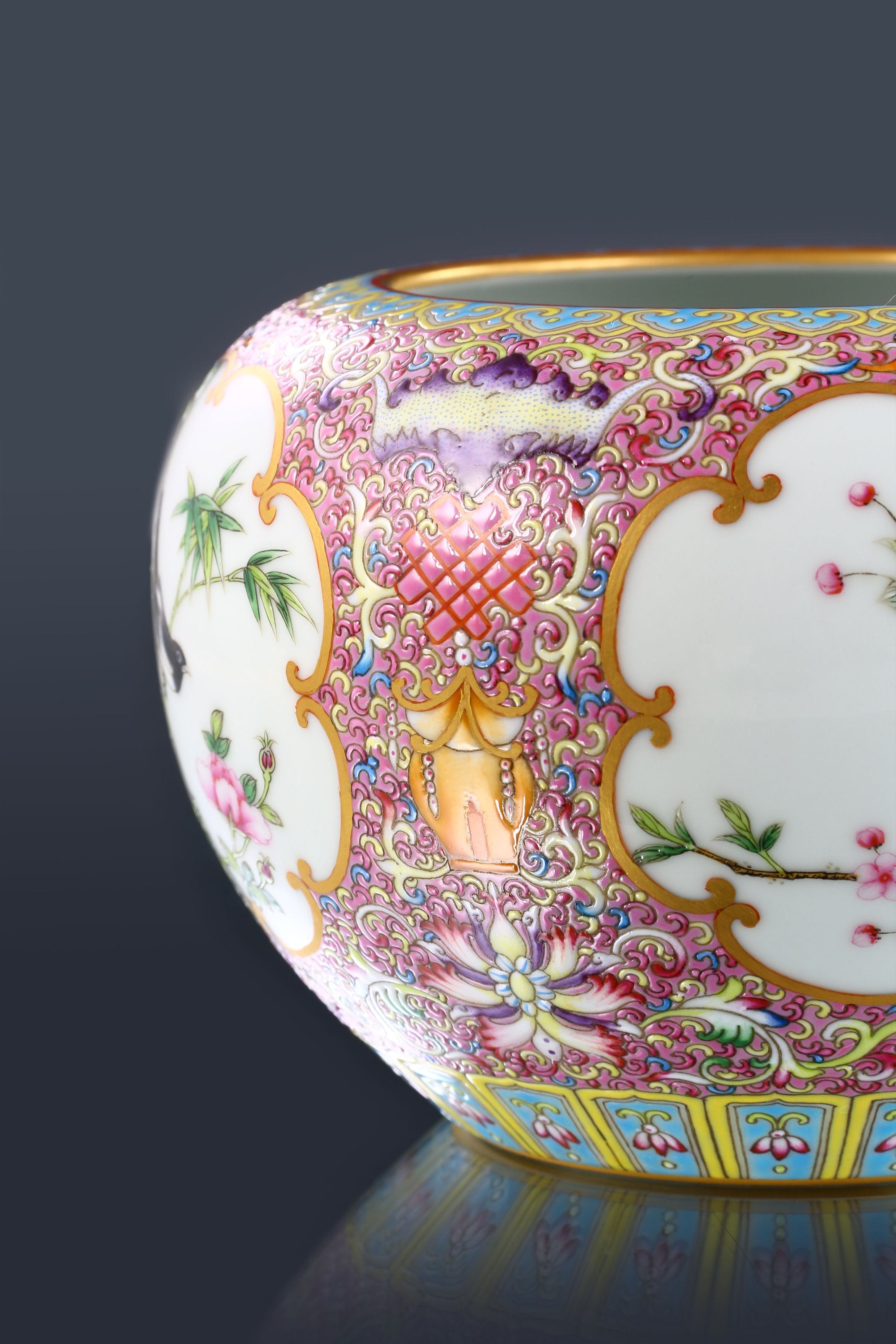

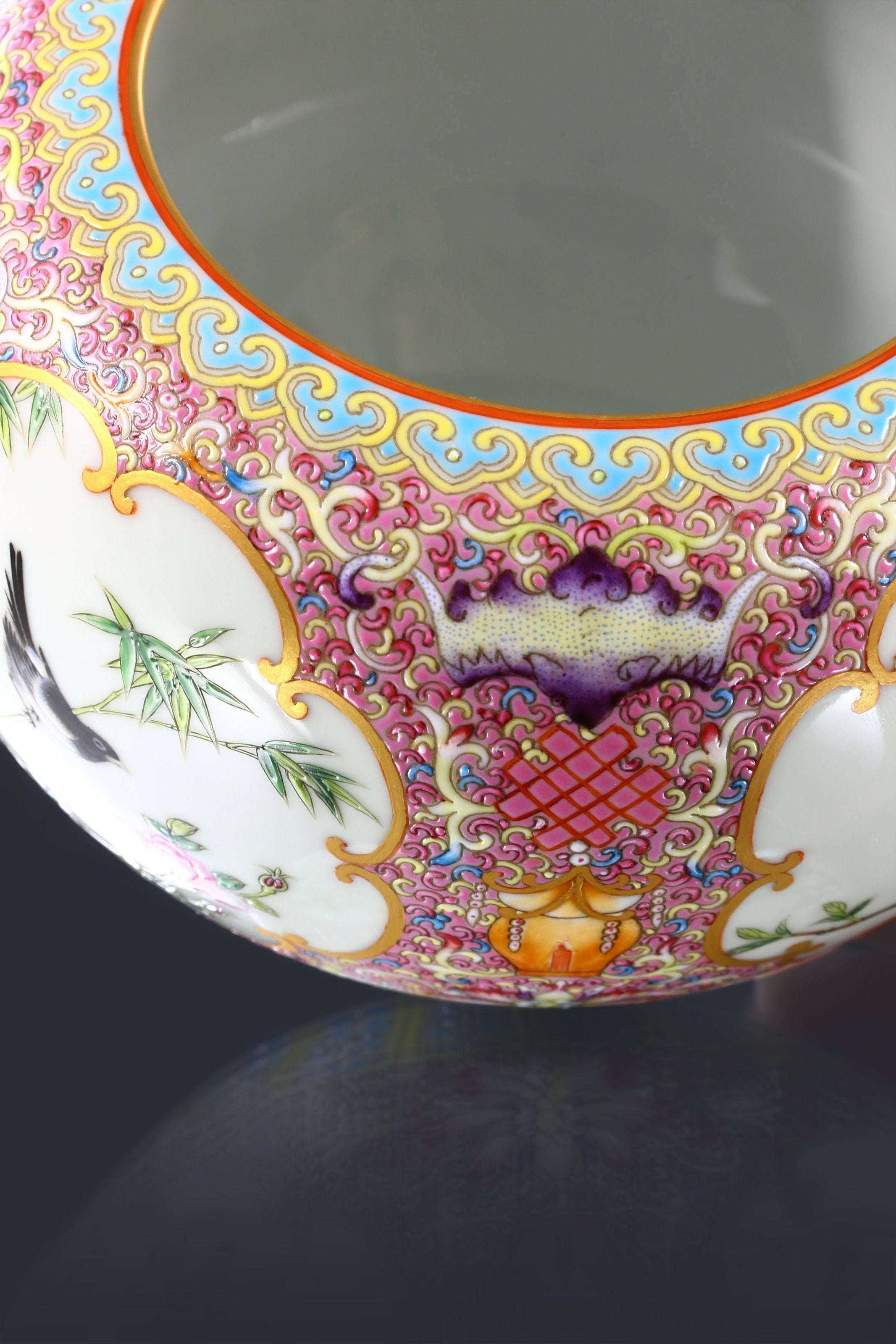
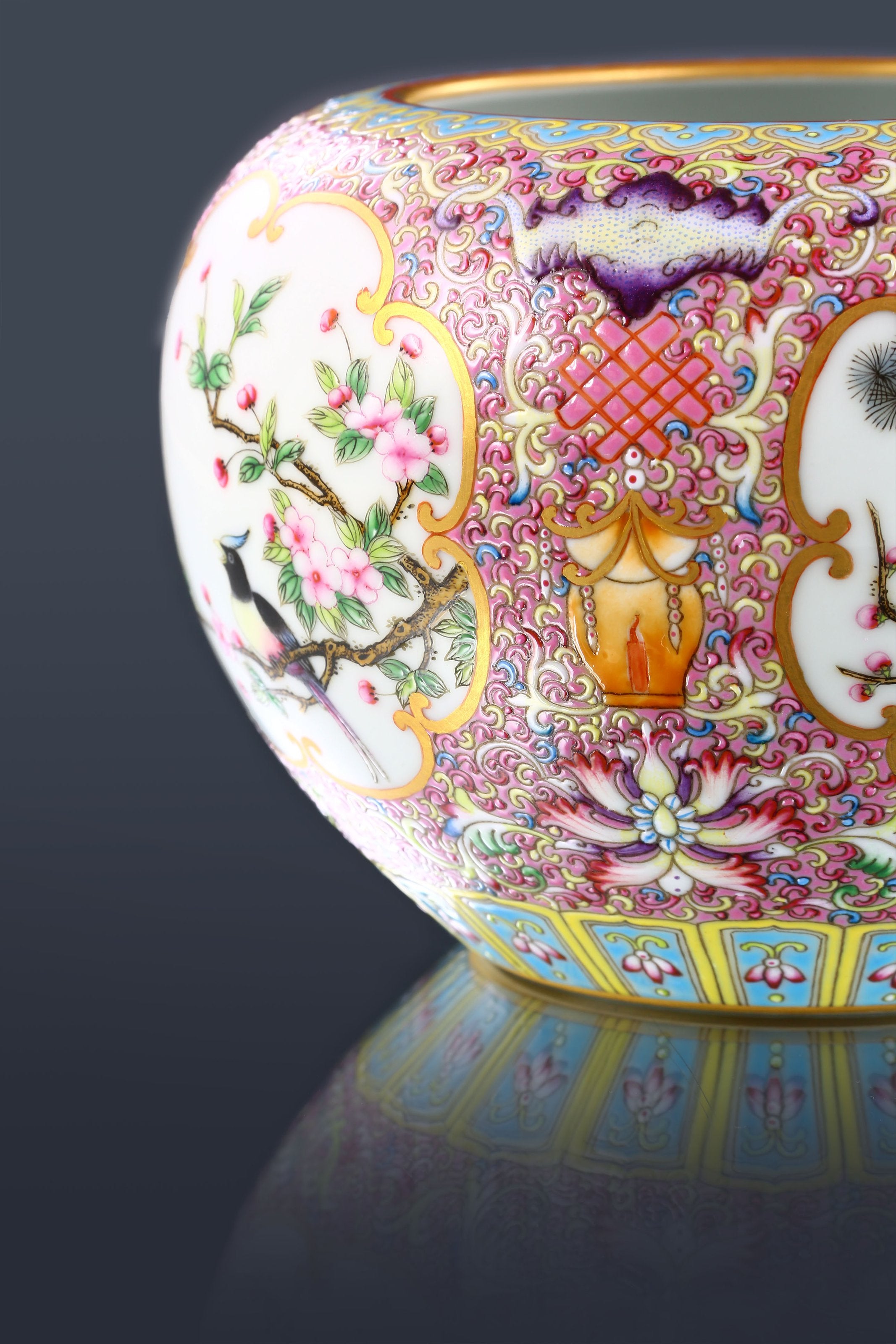
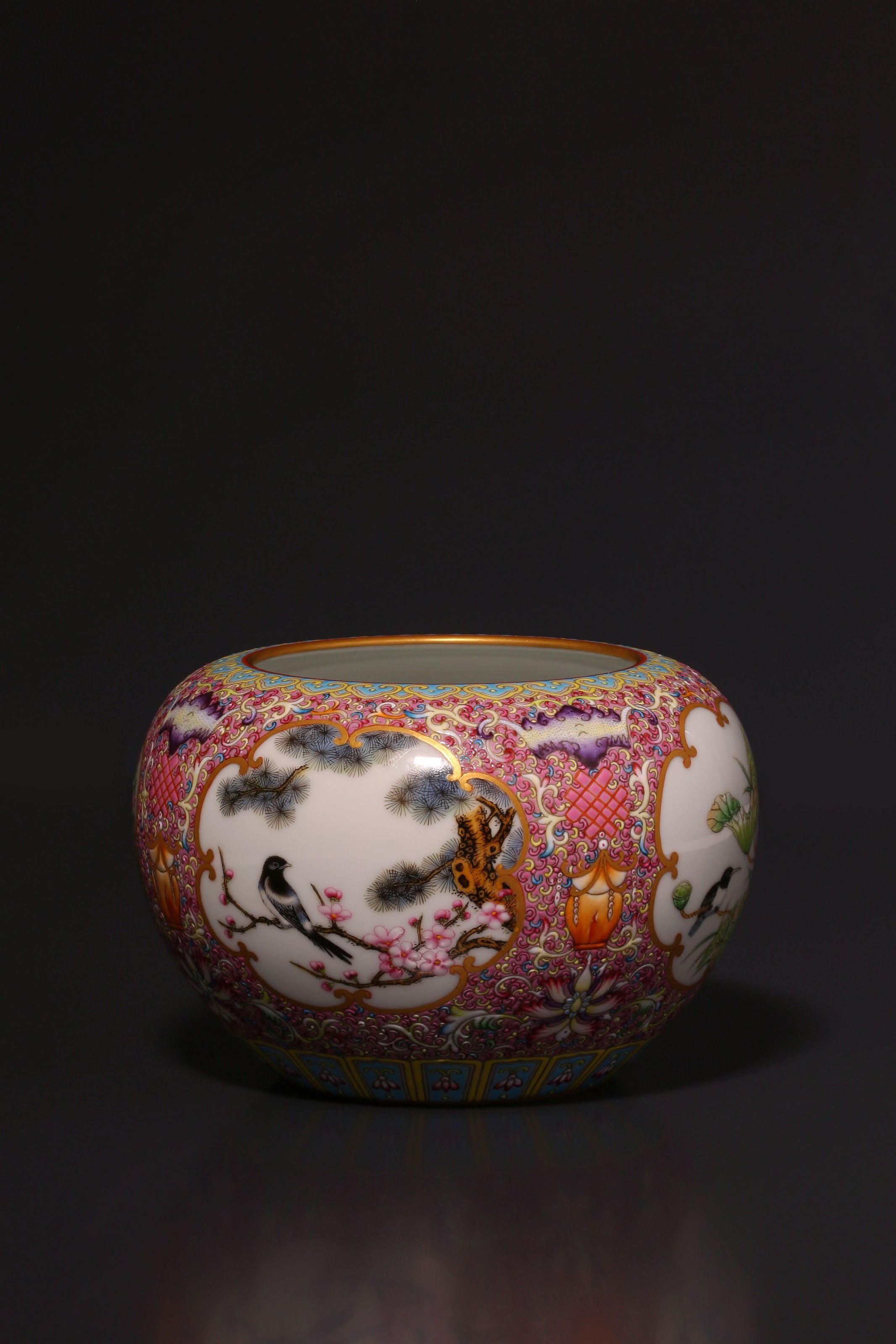

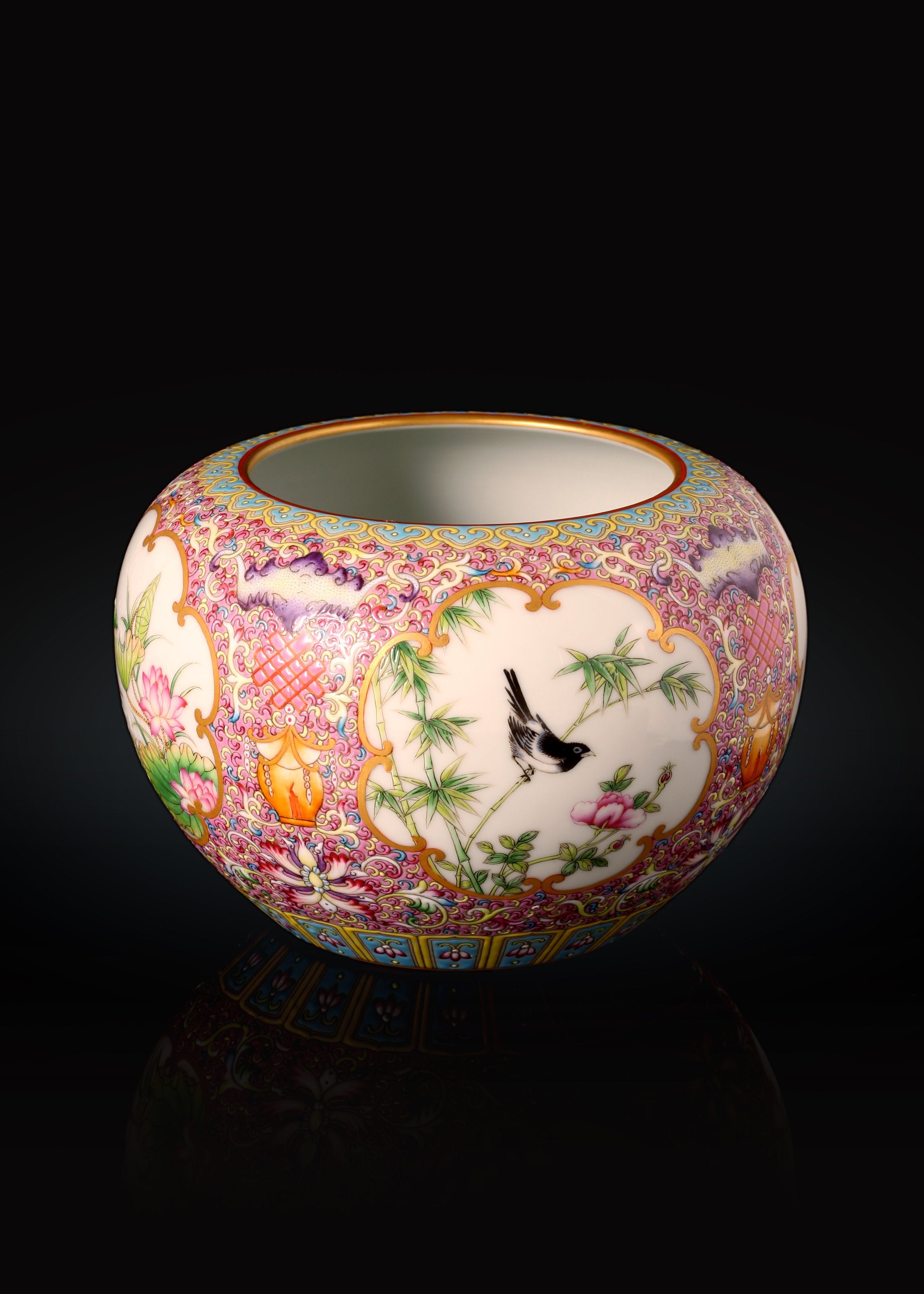

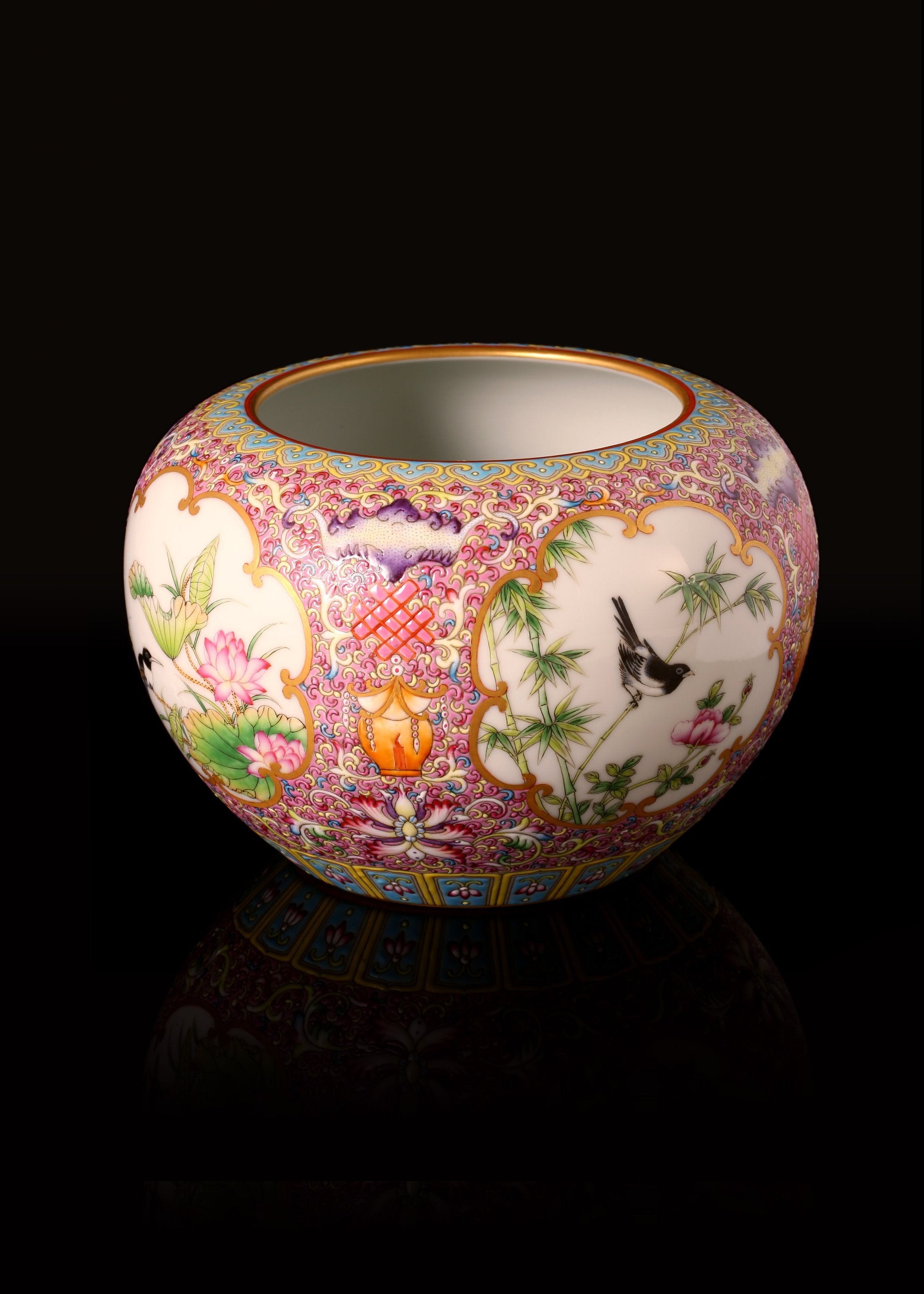
Enamel-painted four-pane window with floral and bird motifs (Jianshui)













Enamel-painted four-pane window with floral and bird motifs (Jianshui)
Enamel-painted four-pane window with floral and bird motifs (Jianshui)
Enamel-painted four-pane window with floral and bird motifs (Jianshui)
Vessel Type: Palace Lantern
Artist: dayatang
Material: Porcelain )
Specifications: Rim Diameter: 8.5cm; Overall Height: 10cm
Vessel Type: Palace Lantern
Artist: dayatang
Material: Porcelain )
Specifications: Rim Diameter: 8.5cm; Overall Height: 10cm
The four-pane enamel painting of flowers, birds, and Jianshui with the ancient moon pattern is colorful and elegant without being gaudy.
It was jointly made by Xu Zhijun, an inheritor of the Qing Dynasty official kiln famille rose porcelain painting technique from Jingdezhen, and Zhang Jian, a master of overglaze enamel and gold-leaf technique, and many other teachers.
It is painted using various techniques such as enamel painting, iron red, and gold leaf application, and is fired four times in the kiln.
The patterns include lantern patterns, lotus flowers, etc. Every pattern has a meaning, and every meaning is auspicious. The exquisite patterns and the elegant colors are perfect and beautiful.
Lantern pattern:
Lantern patterns are auspicious decorative motifs. Hanging lanterns is believed to pray for the addition of sons and wealth to the family. Lanterns are hung during Chinese New Year celebrations, with the Lantern Festival taking place on the fifteenth day of the first lunar month. In some dialects, the word for "lantern" is a homophone for "son," so "lighting a lantern" signifies "adding a son"; therefore, some regions believe that women walking under lanterns will have many children.
Lantern patterns were popular during the Ming and Qing dynasties;
Treasure flower:
The term "Baoxiang" originates from Buddhism. It is a respectful term used by Buddhist believers to refer to the image of the Buddha, and it represents an ideal flower shape that is pure, dignified, and beautiful.
The term "Baoxianghua" does not refer to a single flower shape. It is a pattern that has undergone artistic refinement, incorporating and refining elements from various flowers such as lotus, peony, and pomegranate.
The lotus flower pattern originated and flourished in the Tang Dynasty, inheriting the Tang Dynasty's aesthetic tendency of valuing fullness and the characteristics of national art and culture. By the Song Dynasty, the lotus flower pattern had changed from its rich and luxurious style to become more regular and simple. The Song Dynasty also saw the emergence of the intertwined lotus flower pattern, which also had a more obvious sense of movement.
Enamel:
Besides the intricate and delicate painting process, the four-panel enamel painting of flowers and birds in Jianshui requires four firings in the kiln to complete, each with its own risks.
Enamelware from the Qing Dynasty was originally intended for the enjoyment of emperors and empresses. Enamel is a special type of artificially fired pigment. Before the sixth year of the Yongzheng Emperor's reign (1728), it had to be imported from Europe. After the sixth year of the Yongzheng Emperor's reign, the Qing Palace workshops were able to refine more than 20 kinds of enamel pigments themselves, which is a product of the peak period of ancient Chinese polychrome porcelain craftsmanship.











Frequently asked questions
Use the FAQ section to answer your customers' most frequent questions.
Order
Yes, we ship all over the world. Shipping costs will apply, and will be added at checkout. We run discounts and promotions all year, so stay tuned for exclusive deals.
It depends on where you are. Orders processed here will take 5-7 business days to arrive. Overseas deliveries can take anywhere from 7-16 days. Delivery details will be provided in your confirmation email.
You can contact us through our contact page! We will be happy to assist you.





